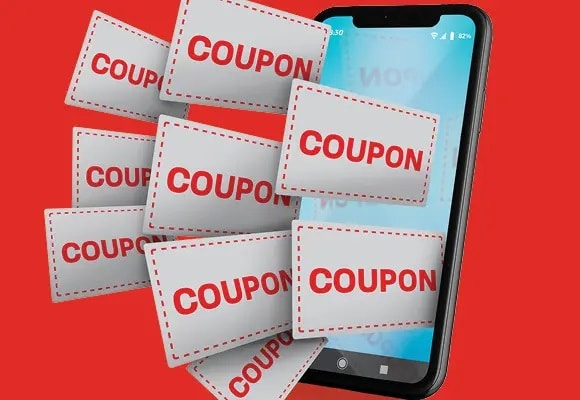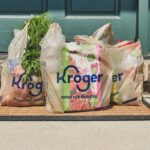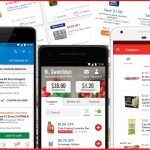
“Despise” is a pretty strong word. After all, digital is the future, we’re told. Paper coupons are passé. But it seems a certain segment of the shopping population remains unconvinced. Despite their increasing ubiquity, a new survey finds that one out of every five grocery shoppers wants nothing to do with digital coupons.
That’s according to the retail data analytics company 84.51° and the latest edition of its Consumer Digest. Each month, 84.51° surveys shoppers to get a sense of their grocery shopping habits and how they’re changing, post-Covid and mid-inflation.
When asked what they “always” do while grocery shopping, two-thirds of shoppers said “look for deals/promotions,” making that activity one of the most common, second only to checking products for quality or freshness. Just under half said they always check for digital coupons, while a third always check a cash-back app for offers.
When it comes to the types of promotions they prefer, though, there’s a distinct dividing line. Digital deals are popular – a third of shoppers ranks digital coupons as their most preferred promotion type, followed by weekly digital offers, buy-one-get-one-free deals and “10 for $10”-type promotions. But for 17% of shoppers – nearly one in five – digital coupons rank dead last on their list of preferred promotions.
Many couponers have long grumbled about the drawbacks of digital coupons – most of them you can only use once, it can be difficult to determine on which products they’re valid, and they don’t always come off your order when you expect them to. Nevertheless, many early critics have come around on digital, because increasingly, that’s where the offers are. Paper coupons have experienced a precipitous decline in recent years, while the number of digital coupons distributed and redeemed has been on the rise.
At the same time, though, the never-digital contingent has become increasingly vocal. Last year at this time, consumer advocate Edgar Dworsky, founder of Consumer World, first called on grocers to “stop discriminating against the digitally-disconnected, particularly seniors” with the use of digital-only discounts that are unavailable to those without smartphones or access to the internet. The grassroots effort gained steam, to the point that several states have begun considering legislation to require retailers offering digital discounts to also offer a paper or non-digital equivalent.
And with one out of every five grocery shoppers either grudgingly using digital coupons, or not using them at all and overpaying as a result, grocers and brands seem to have a ways to go before they’re universally accepted.
Among those who have actually embraced digital, the 84.51° survey found that they’re most likely to use digital coupons when shopping for fresh and perishable products like meat, produce and dairy items. While shopping for packaged products in the center aisles of the store, shoppers are more likely to be influenced by endcap displays and “save $5 when you spend $15”-type threshold offers.
Interestingly, those threshold offers, which don’t require a digital device or internet access, are most likely to appeal to higher-income shoppers, while lower-income shoppers are more likely to cite digital coupons and deals as a preferred way to save money. Of shoppers’ top promotional preferences, using digital coupons and cash-back apps ranked highest among those making less than $50,000 a year.
For brands and retailers looking to attract shoppers, there’s more to consider than those shoppers’ promotional preferences. There’s also the way they plan their grocery store outings. “When shopping in-store, customers usually decide to purchase non-edible staples within personal care and cleaning before they shop,” the report found. “Snacking, bakery and ice cream tend to be purchased during their grocery trip.”
So about three-quarters of all shoppers already have items like paper towels, toothpaste, detergent and over-the-counter medications on their shopping list before stepping into a grocery store. That makes it crucial for manufacturers of those products to use ads, promotions and coupons to ensure their brand ends up in those customers’ shopping carts. Two-thirds of shoppers, meanwhile, say snacks, candy, fresh bakery items and ice cream are among the products they’re most likely to impulse-buy in the store. So 84.51° advises marketers to tempt shoppers into impulse purchases with the use of in-store coupons, signs or prominent displays.
Perhaps the most important part of the 84.51° survey is that the ordinary task of grocery shopping appears to be starting to normalize. Shoppers’ concern over rising prices is at its lowest point in the past year, with 61% now saying they’re extremely concerned about inflation, down 10 points from a year ago. And only 26% say they’re not comfortable with the current state of their household finances.
This is not the time for marketers to become comfortable, though. Concerns about inflation may be falling and shoppers may be more willing to spend, but they’re not willing to spend regardless of price. They’re still looking for deals – in the format they prefer – and the brands and retailers who recognize this by offering promotions, catching shoppers’ attention and addressing the digital divide, could be the ones who ultimately win.
Image source: Hy-Vee















